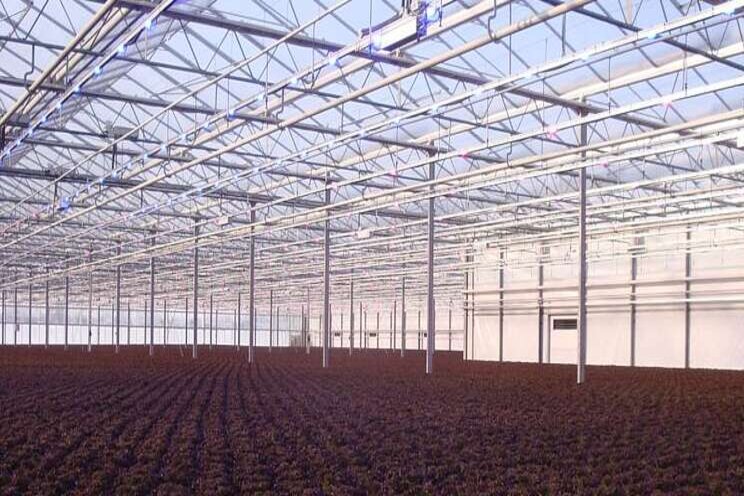Increasing the daily light integral
Added on 23 August 2021

Maximize transmission of sunlight. As new greenhouse construction is planned, many decisions are made that influence transmission of sunlight. Greenhouse characteristics such as the structure and its orientation, glazing material, gutter height, composition of side and end walls, and type and placement of heating and other equipment influence how much solar radiation reaches crops inside (Figure 1). Consider the effects of these decisions on the transmission of sunlight to the crops inside.
Glazing materials have different light-transmission properties. Those with an initial and sustained high-light transmission (such as glass and acrylic) can slightly decrease the need for supplemental lighting in temperate regions. The transmissivity of some plastics decreases with age and exposure to sunlight, so replace them when they have reached their expected lifetime. When two layers of polyethylene are used, the inside layer should have an anti-condensate coating so that water droplets do not accumulate on the film, which decreases light transmission. If whitewash is applied, ensure it is completely removed each autumn. Finally, adjust or repair shade and energy curtains that do not completely retract when not deployed.
The selection and characteristics of control systems influence the amount of light that reaches plants once it enters a greenhouse. A common goal is to minimize overhead obstructions that would shade plants below. Therefore, consider the overhead footprint of all equipment including that for heating, lighting, irrigation and horizontal airflow. Surfaces that are white or reflective will reflect rather than absorb light, while dark surfaces can decrease light available to plants.
When growing hanging baskets above another crop, consider the effects of when they are hung, density, and basket color on light transmission to plants below. When possible, grow shade-tolerant crops under hanging baskets; in northern regions, delay hanging baskets above a crop until at least March; and use white or other light-colored baskets.
Use supplemental lighting. Once the transmission of sunlight is maximized, the only meaningful way to increase the DLI is to purchase, install, and operate electric (artificial) lighting fixtures. The DLI increases as the instantaneous light intensity and hours of operation per day increase. Many growers of ornamentals install a lighting system that delivers 60 to 100 ?mol×m-2×s-1 of light at crop level, while growers of fruiting vegetables typically provide at least twice that intensity.
There are many factors to consider when purchasing a lighting system. Once you determine the light intensity you want to deliver, work with lighting companies and suppliers to develop lighting plans customized to your operation. Consider the size, number, and placement of fixtures, as well as any required accessories, so that the collective system blocks as little sunlight as possible. There are many additional considerations when choosing a lighting system including purchase cost, ease of installation, efficiency (efficacy) of the fixtures, light spectrum and light uniformity in the growing area. Fixtures should also be certified to tolerate damp conditions.
The output of high-pressure sodium and metal halide fixtures can increase with annual cleaning of bulbs and reflectors. More importantly, check each fixture at least once a year to ensure it operates at or near full intensity. Replace bulbs that are burned out, dim, or cycle on/off. Light-emitting diodes (LEDs) usually need less maintenance, but light output could increase with an occasional gentle wipedown to remove dust.
PDF: Increasing the Daily Light Integral
Source and Photo Courtesy of Greenhouse Product News
Source: Greenhouse Product News
More news















